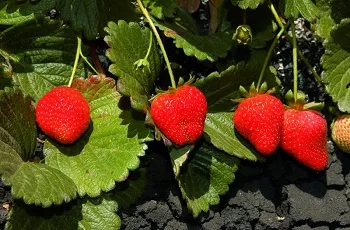

Teldor
Teldor fungicide (active substance: fenhexamid) is the convenient choice for sustained Botrytis control from first flower in strawberries and raspberries.
Product details
Teldor fungicide (active substance: fenhexamid) is the convenient choice for sustained Botrytis control from first flower in strawberries and raspberries, as well as other soft fruit and outdoor grapes. With its unique mode of action, it's a vital partner in disease resistance management programmes.
Botrytis claims thousands of tonnes of fruit each year and by its very nature requires a programme approach to control. Teldor is unique and with the limited number of different modes of action available for Botrytis control has proven itself time and again as an ideal alternation partner from flowering onwards.
Main advantages
Wide on-label crop range
Excellent crop safety, even under cover
Safe to beneficials
Improves shelf life and quality
Strawberries
The first spray of a fungicide programme should be made at first flower (white bud). Apply 1.5 kg Teldor in at least 300 L/ha of water, with a 10-14 day interval between sprays.
Raspberries, blackberries, loganberries and other Rubus hybrid berries
The first spray of a fungicide programme should be made at early flower (white bud). Apply 1.5 kg Teldor in at least 1,000 L/ha of water, with a 10-14 day interval between sprays.
Currants (black, red or white) and gooseberries
The first spray of a fungicide programme should be made at the late grape stage for currants and at first open flowers for gooseberries. Apply 1.5 kg Teldor in at least 750 L/ha of water, with a 10-14 day interval between sprays.
Grapes – outdoor
Botrytis control usually requires a programme of fungicide sprays and Teldor may be used as part of such a programme.
Apply Teldor at 1.5 kg/ha as a protectant. Application may be made at any stage between full flower (BBCH 65) and start of berry softening (BBCH 85). Use a spray volume of 625-1,000 L/ha depending on the application method, with a 21-day interval between sprays. Full coverage of flowers and developing fruit must be ensured by the application method employed.
Important things to remember
Resistance management
Alternating or mixing fungicides with different modes of action is a recognised disease resistance management strategy. To minimise the likelihood of the development of Botrytis strains resistant to Teldor, no more than two sprays of Teldor alone should be applied consecutively within a programme of sprays. Afterwards, change to botryticides from different chemical groups for at least two consecutive sprays.
Grapes – outdoor
If more than one application of Teldor at 1.5 kg/ha is made to a crop in the same growing season, the applications must be alternated with a Botrytis control product from a different chemical group. If only two fungicide applications are made in a growing season for control of Botrytis, only one may include Teldor.
Using Teldor as part of a programme
The leading Botrytis control from Teldor’s unique mode of action makes it the ideal alternation partner for disease control programmes, from flowering in strawberries and raspberries, blackberries, loganberries and other Rubus hybrid berries and grapes, to late grape stage in currants and gooseberries.